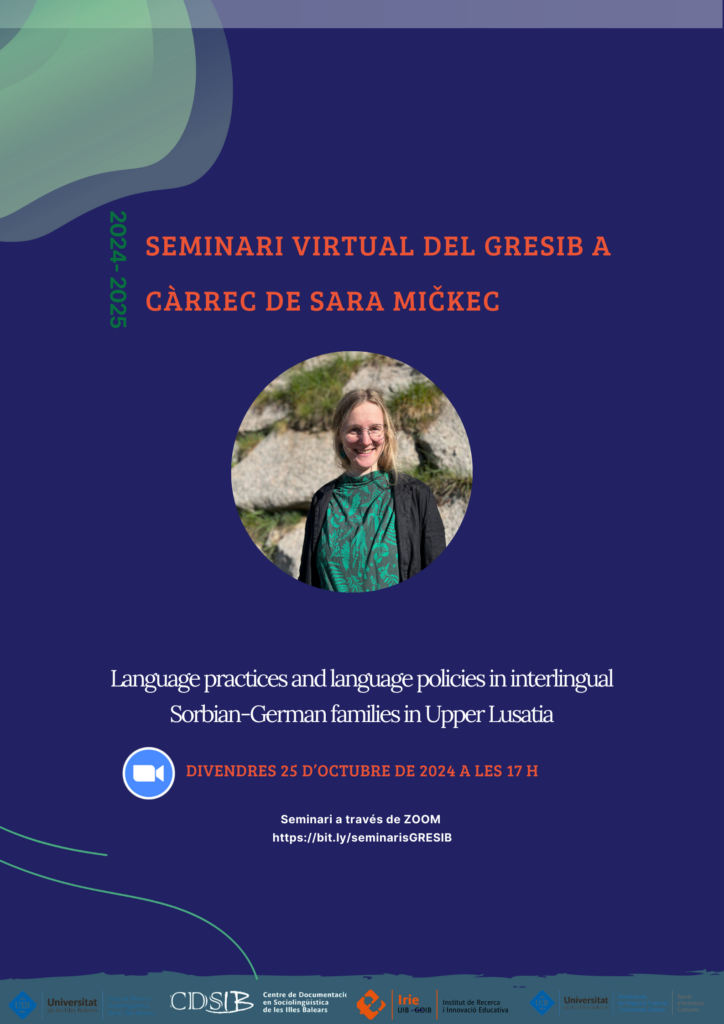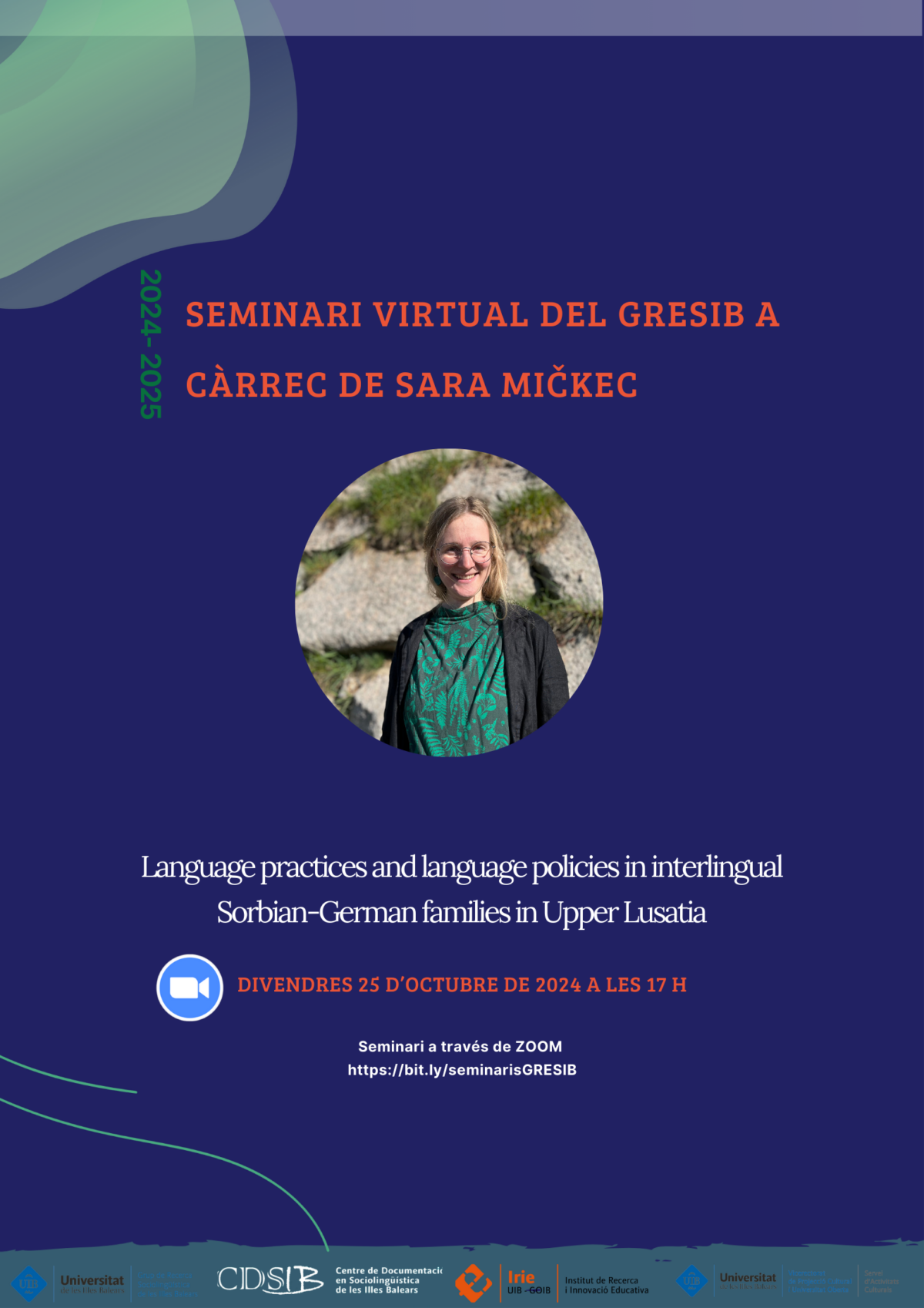
Language practices and language policies in interlingual Sorbian-German families in Upper Lusatia
The Sorbian language in Lusatia in Germany is characterised by highly varying degrees of ethnolinguistic vitality. In my talk I will focus on Catholic Upper Lusatia in Saxony, where the intergenerational transmission of Sorbian is maintained. Sorbian is spoken in many domains there, and Sorbian language learning in schools is encouraged through a more multilingual perspective. However, old monolingual and purist ideologies and practices of language separation persist to its disadvantage.
The talk is based on my doctoral research, which deals with the family/home domain and with the strategies of Sorbian language transmission. It does so from the perspective of family language policy (King 2016), Spolsky´s tripartite division of language policy into language practices, attitudes and management (Spolsky 2004), and language management theory as understood by Neustupný and Jernudd (Nekvapil & Sherman 2015). The empirical material consists of narrative language biographical interviews with parents and children from six families. The couples all have different language backgrounds and have decided to raise their children with both Sorbian and German. One of the parents uses mainly Sorbian with the children and one uses German.
In their everyday negotiations of language use, the families navigate the changing language attitudes and practices of the wider community. While bilingualism is increasingly seen as positive, societal bilingualism in Lusatia remains asymmetrical (Marti 2023), and none of the parents with a German language background have learned Sorbian to any significant extent. Most children speak Sorbian and are attached to the local village communities. However, purist ideas contribute to a feeling of insecurity in Sorbian and lead many of the children to prefer speaking German to their bilingual peers.
The negotiations and language policies in each family point to the processual nature of language maintenance (Kimura 2015). They reflect the mechanisms that shape the relationship between the dominant majority language and the subordinate minority language. They may point to a gradual shift towards the dominant language, but at the same time they involve language practices and management that contribute to the maintenance of the minoritised language.
Kimura, Goro Christoph. 2015. Spracherhalt als Prozess: Elemente des kirchlichen Sprachmanagements bei den katholischen Sorben. International Journal of the Sociology of Language 2015(232). 13–32. https://doi.org/10.1515/ijsl-2014-0040.
King, Kendall A. 2016. Language policy, multilingual encounters, and transnational families. Journal of Multilingual and Multicultural Development 37(7). 726–733. https://doi.org/10.1080/01434632.2015.1127927.
Marti, Roland. 2023. Mehrsprachigkeit als Anfang vom Ende der Mehrsprachigkeit? Der Fall des Sorbischen. In Rita Franceschini, Matthias Hüning & Péter Maitz (eds.), Historische Mehrsprachigkeit (Studia Linguistica Germanica 146), 265–284. Berlin/Boston: De Gruyter. https://doi.org/10.1515/9783111338668-013.
Nekvapil, Jiří & Tamah Sherman. 2015. An introduction: Language Management Theory in Language Policy and Planning. International Journal of the Sociology of Language 2015(232). 1–12. https://doi.org/10.1515/ijsl-2014-0039.
Spolsky, Bernard. 2004. Language Policy (Key Topics in Sociolinguistics). Cambridge: Cambridge University Press.
Accés al seminari: https://bit.ly/seminarisGRESIB

